new posts in all blogs
Viewing: Blog Posts Tagged with: loneliness, Most Recent at Top [Help]
Results 1 - 10 of 10
How to use this Page
You are viewing the most recent posts tagged with the words: loneliness in the JacketFlap blog reader. What is a tag? Think of a tag as a keyword or category label. Tags can both help you find posts on JacketFlap.com as well as provide an easy way for you to "remember" and classify posts for later recall. Try adding a tag yourself by clicking "Add a tag" below a post's header. Scroll down through the list of Recent Posts in the left column and click on a post title that sounds interesting. You can view all posts from a specific blog by clicking the Blog name in the right column, or you can click a 'More Posts from this Blog' link in any individual post.
I have carried Olivia Laing's
The Lonely City from place to place this past month. Laing is a thrilling writer. A form breaker. A true, adult, expansive thinker. In
Lonely she weaves together her personal story with the lives of Edward Hopper, Andy Warhol, David Wojnarowicz, and others.
I'm going to be writing about this book in the next issue of Juncture Notes, so no need to say much more about it here. For today, I simply want to quote from the end. Here Laing is speaking about the healing power of art. She holds in her hands the works that others have made. She finds, in them, necessary connection. We live at a time of jarring national discourse, social media degradations, easy, anonymous strikes.
But art speaks of and for the honestly questing self. It speaks not just for the artist but to those seeking proof that their own yearning is neither aberrative nor, somehow, wrong. Loneliness is human. It binds us to each other.
When I came to New York I was in pieces, and though it sounds perverse, the way I recovered a sense of wholeness was not by meeting someone or by falling in love, but rather by handling the things that other people had made, slowly absorbing by way of this contact the fact that loneliness, longing, does not mean one has failed, but simply that one is alive.
Earliest man lived in small tribes. With fewer people, they relied on each other more. Such is the stuff of Historicals, Westerns, and Literary pioneer stories. When people died, especially in large numbers due to disease, famine, or drought, it preyed on the survivors' mortal fear of being alone. These stakes can heighten a story problem or create a scene conflict.
If the population of a planet is dying, Dick has an overall story problem.
If Jane feels alone in her marriage, she has a personal dilemma or overall story problem.
The situation in a dark, spooky mansion is heightened if Dick is alone, as would a perfectly normal forest. A planet would be terrifying if he was the only surviving astronaut.
The smaller the population, the higher the stakes of survival and the more claustrophobic the situation becomes. Put Dick in a city of a thousand people and he can easily get lost in the throng. That makes a good Mystery. Putting ten people in a space station makes a great Science Fiction story. Killing them off one by one makes a great Thriller or Horror story. Post apocalyptic stories explore our fear of being alone and the desire for survivors to find one another. Science Fiction stories explore our desire to not be alone in the universe.
On a personal level, most of us prefer to live with someone. A few thrive on the freedom of living alone.
How far is Jane willing to go to feel connected? Jane may marry someone she does not love, become friends with someone she wouldn’t otherwise, build a robot so she has a companion, join an organization she does not agree with, or draw a face on a football so she has someone to talk to on a deserted island.
How far is Dick willing to go to live alone? He might rent a cabin in the Dakota badlands or buy an island and find out he needs people after all.
Characters who are hurt by something or someone often withdraw from the people around them. Some do it for a week, others a month, at the most extreme end they withdraw from life entirely.
At the scene level Dick may need to be alone to accomplish something but all his well-meaning friends keep dropping by to chat.
Dick may momentarily find himself in an empty house, which creates the perfect opportunity for the ghost to visit.
Isolation adds an element of creepiness to any situation. It is a keystone of Horror stories. The characters must be trapped in a building, a city or on a planet from which there is no escape, so they must turn and face the horror instead of run away from it.
Isolation is critical in a Gothic novel for the same reason. The hapless governess cannot simply walk away from the creepy plantation house. She can’t board a bus or walk into a Starbucks. She can’t have a cell phone – not one that works anyway – or call a cab. She needs to be isolated so that she is forced to unravel the mystery or uncover the secret instead of running away at the first sign of trouble.
Isolation is also a key component of YA because so many teens feel isolated: from their family, their peers, their world. Isolation leads to depression and anxiety and feelings of low self-esteem. The character can realize they aren’t alone after all. They can graduate high school and find their “soul mate” friends in college. They can leave their all-Caucasian neighborhood to live in a predominantly Hispanic one and find themselves at home, or find the new community has its share of issues to contend with.
In a Literary story, Sally might embrace her mid-life crisis by selling up and moving to a house in Italy only to realize the locals don’t want her there. All that high life and camaraderie she expected are denied her. The doors remain shut but the curtains are pulled to the side so they can spy on her. Sally sits in her wilting, rustic money pit an unscrupulous salesman talked her into and realizes she should have stayed at home. It was boring but people liked and accepted her there. If murders start happening, it could become a Mystery and Sally the sleuth forced to solve them. In a Thriller, someone could want her to leave their family home and she becomes the target.
In a Romance, the opposite could happen. Sally could feel isolated in her home town because all of her friends have moved away or moved on. Her family might not be supportive or emotionally connected. She kicks the traces and runs off to a charming seaside cottage in Ireland and finds the circle of friends she desperately needed and a lad with a charming brogue to keep her warm at night.
If Sally’s best friend is moving away, in a sense abandoning her, the situation can cause subtle conflict as Sally attempts to overcome the overall story problem or a momentary distraction at scene level.
You can use isolation to fuel any genre at any story level.
For more obstacles that create conflict, pick up a copy of Story Building Blocks II: Crafting Believable Conflict in print or E-book version.
By:
Sue Morris @ KidLitReviews,
on 5/8/2015
Blog:
Kid Lit Reviews
(
Login to Add to MyJacketFlap)
JacketFlap tags:
Children's Books,
creativity,
Picture Book,
friendship,
imagination,
Favorites,
Books for Boys,
FRED,
Debut Author,
loneliness,
imaginary friends,
adult picture books,
Library Donated Books,
Peter Pauper Press,
6 Stars TOP BOOK,
Debut Illustrator,
Top 10 of 2015,
FRED by Kaila Eunhye Seo,
Kaila Eunhye Seo,
losing child-like qualities,
Add a tag

Welcome to TGIF
Thank Goodness It’s FRED!
x
 X
X
X
x
FRED
Written by Kaila Eunhye Seo
Illustrated by Kaila Eunhye Seo
Peter Pauper Press 5/01/20`15
978-1-4413-1731-5
40 pages Age 4—8
X
X
“Fred’s world is filled with fantastical friends that make
his days so much fun he hardly notices that no one else can see them. But one day Fred goes off to school, and things start to change. As Fred grows up, his childhood friends slowly fade away and seem to disappear, taking some of life’s sparkle with them. But a chance meeting with a special young girl reminds Fred—and readers young and old alike—that magic and wonder never really disappear . . . they live forever in our hearts.” [book jacket]
Review
Fred’s imaginary friends have the people in his small town thinking he is different—a polite way of saying the boy is odd. Fred has the ability to see and hear things other people cannot. Fred also believes in things the other townsfolk either cannot, or simply will not, believe. Despite the townsfolk’s’ inability to see, hear, or care about Fred’s creatures, the creatures cared about the townsfolk.
“Sometimes they acted like the wind and moved branches out of the way for people.
And sometimes they acted like shade and kept people cool on hot summer days”
What is Fred seeing and hearing that make the others consider the young boy an oddity? Fred sees creatures . . . imaginary creatures . . . imaginary friends. He never cares about making other friends—he already has the best friends a young boy could hope to have.

When the day arrives for Fred to begin school, he makes new friends . . . real, alive friends. His imaginary friends wait, no longer part of Fred’s day. One day becomes two, then three, and each school year blends into the next. One-by-one the creatures Fred adored disappear, losing their color, and fading into the background. By the time he reaches adulthood, all the imaginary creatures are lost from Fred’s memory.
The real world takes too much of Fred’s attention and time. Fred’s days run together as he does the same things day after day. This monotony leaves Fred feeling empty, friendless, and all alone, even in the park where he played so joyfully with . . . with . . . he doesn’t remember with whom he played with, or even what his playmates look liked. Where did his childhood friends go?
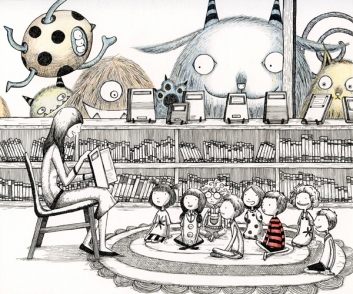
FRED will have you wondering when your imaginary friends left you. When these old friends leave, they take with them a very precious commodity: your imagination. Can you imagine doing anything other than your daily routine? Not just a dream vacation, but something that will cheer you up, daily make you implausibly happy, and has the synapses on the right-side of your brain sizzling with ideas, as they jump from neuron to neuron. Neither can Fred, poor guy. Then he gets lucky. A small child comes to the park while Fred sits reading—always a delightful detail in a children’s book. The young girl, with a pocket full of lollipops, asks Fred if he and his friends would like a lollipop. His friends anxiously watch Fred, who says,
“Excuse me?”
Someone can see his friends. They are all still with him. A synapse POPS! Another SIZZLES! Fred’s heart no longer feels weighed down, and instead, he feels free. Fred’s imaginary friends—and his imagination—return. Adult Fred finally realizes he . . . wait, I cannot tell you what Fred realized. Fred would like to tell you himself. This is his story. FRED surprised me, in a very wonderful way. Imagination, and the magical journeys it can create, is not the sole domain of childhood, but we tell ourselves there is no time for such “silliness,” yet without retaining our child-like selves, we lose much of our creativity.

I love Ms. Seo’s direct lines in the pen and ink illustrations. Each spread overflows with artistic detail and the color remains only with the story and its characters. I think Ms. Seo’s attention to detail and using color to focus readers’ eyes on the story shows she cares about making a terrific sensory experience for children. The monsters are hilarious and kid-friendly. Not one creature will cause nightmares, as none is even a wee-bit scary. They walk among the unsuspecting—and unbelieving—in town without any commotion. I do wonder how the non-believers (who possess little to no imagination), would think if they saw what Fred could see. The story and all the eye-catching illustrations are a definite sign that this debut author/illustrator has not lost her childhood imagination, inspiration, or her imaginary friends.
FRED. Text copyright © 2015 by Kaila Eunhye Seo. Illustrations copyright © 2015 by Kaila Eunhye Seo. Reproduced by permission of the publisher, Peter Pauper Press, White Plains, NY.
Purchase FRED at Amazon —Book Depository—Peter Pauper Press.
—Book Depository—Peter Pauper Press.
Learn more about FRED HERE.
TEACHERS: Common Core Teaching Guide for FRED.
Meet the author/illustrator, Kaila Eunhye Seo, at her website: http://www.eunhyeseo.com/
Find more picture books at the Peter Pauper Press website: http://www.peterpauper.com/
**NOTE: Through the month of May, 20% off at Peter Pauper Press. Use Code: MAY 20
Review Section: word count = 663
Huntington Press Best Picture Books 2015
Copyright © 2015 by Sue Morris/Kid Lit Reviews. All Rights Reserved

x
MEGA FRED FRIDAY GIVEAWAY from May 1st – May 29th
Set of all TEN of our Critically Acclaimed Picture Books
For a Chance to WIN Click the Rafflecopter Link Below
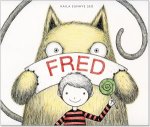
Fred by Kaila Eunhye Seo
An EARLY COPY of

All the Lost Things by Kelly Canby

Elephantastic by Michael Engler
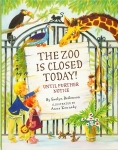
The Zoo Is Closed Today! by Evelyn Beilenson

Simpson’s Sheep Won’t Go to Sleep! by Bruce Arant

Hank Finds an Egg by Rebecca Dudley
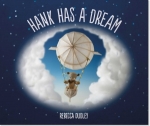
Hank Has a Dream by Rebecca Dudley
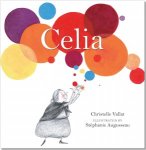
Celia by Cristelle Vallat
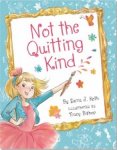
Not the Quitting Kind by Sarra J. Roth

Digby Differs by Miriam Koch!
For a Chance to WIN Click the Rafflecopter Link Below
Rafflecopter Giveaway

WAIT . . . THERE’S MORE!
Kid Lit Reviews is giving away ONE copy of FRED
To ENTER Just Leave a COMMENT Below
Filed under:
6 Stars TOP BOOK,
Books for Boys,
Children's Books,
Debut Author,
Debut Illustrator,
Favorites,
Library Donated Books,
Picture Book,
Top 10 of 2015 Tagged:
adult picture books,
creativity,
FRED,
FRED by Kaila Eunhye Seo,
friendship,
imaginary friends,
imagination,
Kaila Eunhye Seo,
loneliness,
losing child-like qualities,
Peter Pauper Press 








By: Ella Sharp,
on 12/11/2014
Blog:
OUPblog
(
Login to Add to MyJacketFlap)
JacketFlap tags:
Books,
Christmas,
memories,
smell,
Proust,
senses,
loneliness,
holiday season,
perfume,
*Featured,
Science & Medicine,
holiday depression,
sensory memory,
Psychology & Neuroscience,
Cretien van Campen,
emotional memory,
nostaligia,
The Proust Effect,
Add a tag
As Christmas draws near, and the dark cold evenings become longer, a number of people will have a foreboding about being alone, creating a sense of loneliness. Is loneliness something to anticipate with anxiety? Or even fear? Should we avoid being on our own, and seek out companionship? On the contrary, I will argue that approaching loneliness and giving it focal time can enhance your wellbeing.
Loneliness has many faces. Sociologists distinguish two types: social loneliness, missing relationships with friends and family; and emotional loneliness, the missing of an intimate relationship, like a partner. Anthropologists have also observed other types of loneliness, such as existential loneliness, the feeling of being lost in the world. In practice, social workers and health care professionals tend to view loneliness as a condition, to be countered or cured. Although there are therapies for loneliness as a condition, they seldom are sustaining in the long term. They view loneliness as an aberration that needs to be treated, and not as a transient part of life.
Being alone has its advantages, offering time for reflection on your life, including the people within it, and most poignantly, those people whom you miss. It offers time to take distance and renew oneself, to step aside from the hectic, running pace of daily life and pause, to have time to yourself, time to muse, digest and cherish more deeply the thoughts and memories that surface, and to view your life with a different perspective.
The French novelist Patrick Modiano, the winner of this year’s Nobel Prize in Literature, has sketched out the beauty of being alone in many of his books. Loneliness is a recurring theme in his oeuvre, where protagonists spend more time in their thoughts and memories than in physical action. His characters wander often alone, approaching their loneliness and longing for other people they have met and with whom they have shared meaningful experiences as balanced parts of life, reflecting and offering positive and negative feelings, not as a condition to be avoided, or feared.
Modiano is often called the heir of the French novelist Marcel Proust, who wrote his magnum opus In Search of Lost Time a century ago. Although the books of Modiano and Proust are very different, they share similarities of theme and attitudes about the appreciation of involuntary memories, which offer their protagonists new insights and perspectives on the situations they are experiencing. These memories are often evoked by the passing impressions of a sound, a visual image, taste, and most of all by scents.
Of all the senses, the sense of smell is the most capable of evoking intense emotional memories. Psychological and neurological studies have shown that memories triggered by scents are more emotional and evocative than those elicited by images or sounds, although there are little differences in the level of detail or vividness of the memories.
The involuntary nature of these scent memories means that they become difficult to control; a scent may pass by you and suddenly intense childhood memories are evoked. In this situation, the best response is to be open, to be aware of your environment and not to close yourself off to the scents that are spinning about the air amid your daily wanderings. The protagonists in the books by Modiano and Proust are often alone or absentminded in a crowd or society when, by chance opportunity, they encounter their best memories.
Besides being involuntary, the scents that evoke special memories are personal and situational, and as they layer and fuse become ‘autobiographical perfumes’, as I have coined them. Everybody can have several autobiographical perfumes that evoke these memories, and for each person, they are different. For one, an autobiographical perfume may be the scent of a special variety of fresh baked cookies, while for another it may be the scents of a church interior. People share common scents as well, especially when they are of the same generation or region and they have encountered the same kind of typical smells in their childhood. Think of the smell of local food, pastry, herbs, and spices; scents attached to familiar landscape and spaces, such as farmland and forest, bars and churches; and each of these experiences enhanced, amplified, and extended by new scents indicative of the holiday season.
And so I present to you the idea of a ‘perfume for loneliness’. This is not a perfume, comprised of chemical or natural extracts, or a medicine as one might expect, against loneliness. It is not a formula that works for all, and is not available to purchase in a shop. It is a perfume for you, personally to discover and create for yourself.
Begin by exploring what kind of scents trigger childhood memories for you. Gather these scents physically, and compose your own personal autobiographical perfume. When you are alone, in a time of reflection, consciously inhale these scents. They will create space to facilitate you to approach and understand your personal feelings of loneliness better. They will evoke special memories that, just like opening a gate, can lead you to deeper reflection on your life, and a richer understanding of the people who are absent and missed. As you inhale, be comforted by this sensory experience, and be at peace with the knowledge that loneliness is not a feeling to avoid or fear.
Headline image credit: Ocean view. CC0 via Pixabay.
The post A perfume for loneliness appeared first on OUPblog.


By:
Jen Robinson,
on 10/15/2013
Blog:
Jen Robinson
(
Login to Add to MyJacketFlap)
JacketFlap tags:
Reviews,
party,
friendship,
Picture Books,
linda sue park,
matt phelan,
Newsletter,
loneliness,
pandas,
inclusiveness,
zoos,
Add a tag
Book: Xander's Panda Party
Author: Linda Sue Park (@LindaSuePark)
Illustrator: Matt Phelan (@MattPhelanDraws)
Pages: 40
Age Range: 4-8

 Xander's Panda Party, by Linda Sue Park, is, as you might expect, a picture book about a panda named Xander who wants to throw a party. It's also about inclusiveness and about battling loneliness.
Xander's Panda Party, by Linda Sue Park, is, as you might expect, a picture book about a panda named Xander who wants to throw a party. It's also about inclusiveness and about battling loneliness.
Xander wants to have a rip-roaring panda party. But this turns out to be a bit tricky, as he is the only panda in the zoo. So he expands his idea to invite all of the bears. But it turns out that Koala is actually a marsupial. He doesn't want to leave her out, so Xander has to expand the party to encompass all mammals. But then Rhinoceros wants to bring his bird, and so on, and so on, until everyone at the zoo is invited to the bash. Xander's generosity of spirit is rewarded at the end, when a very special new friend arrives at the zoo.
Park's text is poetic, using lots of rhyme without being sing-songy. Like this:
"But Xander was the only panda. Just one panda at the zoo.
Xander sat and chewed bamboo. He changed his plans and point of view."
Doesn't that just beg to be read aloud? And this:
"Xander's party preparations took great pains and perspiration.
"The menu needs some taste sensations, plus the proper vegetation!""
Delightful! This is a book that parents will be able to read over and over again, because the cadence is so enjoyable. There are also plenty of strong vocabulary words, like "congregating" and "fidgeted."
The message of inclusiveness, while certainly present, is surrounded by the gentle humor of the story, such that it doesn't feel overwhelming. I like that it's not always obvious to Xander that he should keep expanding his party. He really struggles with the decision each time. This having to work to decide to do the right thing will certainly make the book resonate more with young readers.
As rendered in ink and watercolor by Matt Phelan, Xander is adorable. His loneliness at the start of the book is palpable. His joy at the end will bring a smile to any reader's face. The other animals are sketched in, interesting though not quite realistic, but the focus remains on Xander. My favorite page is one filled with small vignettes, as Xander races about the zoo, inviting other creatures to his party, leaving a trail of colored envelopes behind.
It sounds a bit trite to say that a picture book is heart-warming. But what can I say? Xander's Panda Party is heart-warming, entertaining, and eminently read-aloudable. It is not to be missed.
Publisher: Clarion Books (@HMHKids)
Publication Date: September 3, 2013
Source of Book: Review copy from the publisher
FTC Required Disclosure:
This site is an Amazon affiliate, and purchases made through Amazon links (including linked book covers) may result in my receiving a small commission (at no additional cost to you).
© 2013 by Jennifer Robinson of Jen Robinson's Book Page. All rights reserved. You can also follow me @JensBookPage or at my Growing Bookworms page on Facebook.


By: Alice,
on 2/21/2012
Blog:
OUPblog
(
Login to Add to MyJacketFlap)
JacketFlap tags:
Avatar,
Martin Scorsese,
time,
3D,
loneliness,
Hugo,
Alfred Hitchcock,
james cameron,
casino,
Editor's Picks,
*Featured,
filmmaker,
Dial M For Murder,
TV & Film,
Arts & Leisure,
A Trip to the Moon,
Cinema of Loneliness,
Gangs of New York,
Georges Méliès,
history of film,
Robert Kolker,
Samuel Fuller,
Shock Corridor,
Shutter Island,
The Aviator,
The Departed,
kolker,
scorsese’s,
scorsese,
cameron’s,
hugomovie,
Add a tag
By Robert Kolker
“That’s that,” quoting Ace Rothstein at the end of Casino. I didn’t end the Martin Scorsese chapter on an optimistic note in the fourth edition of A Cinema of Loneliness. There is more than a hint that the Scorsese’s creative energies might be flagging.
My pessimism grew from the direction — or lack of direction — Scorsese’s films had taken over the past decade. I thought that the big productions of the 2000s — Gangs of New York, The Aviator, and The Departed — indicated some kind of flailing about for ideas. These films were not as lean and mean as the earlier gangster movies that worked at the speed of light and were deliriously comic in their basic brutality.

Copyright Paramount Pictures. Source: shutterisland.com.
Shutter Island seemed to seal the decline. An unofficial remake of Samuel Fuller’s 1963 Shock Corridor, the film could have been made, I thought, by anyone. It bore none of the hallmarks of Scorsese’s style and all of the hallmarks of an overwrought Hollywood gothic tale.
An obvious riposte to my pessimism is that I am not in a position to question an artist’s evolution. Scorsese no more than any other filmmaker is bound to repeat himself, and the great gangster and street films of his early period are a thing of the past. Artists change with time, and the results of that change may not be to everyone’s taste. At least not to mine.
With this in mind, I went to see Hugo with a lot of skepticism. Why would Scorsese make a film in 3D? The only reason I could come up with — aside from the fact that he might just wish to experiment with the old/new screen technology of the moment — is that Alfred Hitchcock made a 3D film when that format was first introduced in the 1950s: Dial M For Murder. Scorsese almost always roots his work in films of the past. His imagination is constructed of film. He is an amateur archivist, with a huge collection of movies that he watches continually. He has his cast and crew look at old movies when they are preparing a new one. His films become something of archival works themselves, full of allusions to their predecessors. But there is more to it than this.
I have resisted the recent 3D craze. I did go to see Avatar out of curiosity. James Cameron does not often repay curiosity. But something stood out in that film. The mise-en-scène of Cameron’s mythical world, with its floating vegetation in a liquid like atmosphere, reminded me of the underwater sequences of Georges Méliès’s A Trip to the Moon (Le voyage dans la lune, 1902). This magical film — Méliès was a magician as well as a filmmaker — was just one entry into his enormous filmography of fantasy filmmaking, his counter to the

By: Lauren,
on 10/5/2011
Blog:
OUPblog
(
Login to Add to MyJacketFlap)
JacketFlap tags:
Sociology,
Technology,
facebook,
cell phone,
bob dylan,
social media,
social networks,
twitter,
loneliness,
text messaging,
narcissism,
addicted,
*Featured,
Louis René Beres,
iphone 4S,
Siri,
Add a tag
By Louis René Beres
A visibly deep pleasure is embraced by cell phone talkers. For tens of millions of Americans, there is almost nothing that can compare to the ringing ecstasy of a message. It also seems that nothing can bring down a deeper sense of despair than the palpable suffering of cellular silence. Perhaps half of the American adult population is literally addicted to cell phones. For them, a cell, now also offering access to an expanding host of related social networks, offers much more than suitable business contact

“One of the things reading does, it makes your loneliness manageable if you are an essentially lonely person.” — Jamaica Kincaid, who has a novel excerpt out in Little Star

By: shelf-employed,
on 9/23/2010
Blog:
Shelf-employed
(
Login to Add to MyJacketFlap)
JacketFlap tags:
birds,
historical fiction,
inspirational,
death,
moving,
loneliness,
E,
pioneers,
rural life,
Add a tag
Block, Francesca Lia. 2010.
House of Dolls. Illustrated by Barbara McClintock. New York: Harper Collins.
Again, a small and beautifully illustrated cover attracted my attention. This time, however, seeing that the author is Francesca Lia Block, whom I remember for
Weetzie Bat, I was expecting something out of the ordinary.
Unlike
The Very Little Princess, this time I got what I expected. In
The Very Little Princess, it is the beautiful doll who is behaving badly.
In the
House of Dolls, it is the young girl, Madison, who vents her loneliness, resentment and frustration on the stoic inhabitants of the dollhouse - the beautiful Wildflower, Rock Star and Miss Selene, and their unlikely companions, the camouflaged Guy, and B. Friend, "a devastatingly handsome stuffed bear," with a red crochet beret and flannel vest.
Disturbed by the news and her unfulfilling family life, Madison Blackberry sends Guy and B. Friend "to war." Then B. Friend is pronounced MIA. The usually serene dolls are devastated.
The dolls did not know that "war" was really a dusty box in a closet of the apartment where the dollhouse lived. It didn't matter. As far as Guy and Wildflower were concerned, that was war. War was life without each other.
Eventually, the real war is over, and with the love of a caring grandmother and a tiny doll determined to make a difference, so too is the war in Madison's heart.
And Guy whispered, "War is being blinded and locked in a box, unable to see, hear, or touch you, my wildflower. War is being reminded that you are completely at the mercy of death at every moment, without the illusion that you are not. Without the distractions that make life worth living."
A serious book that parallels much from the famous prayer, teaching the serenity to accept the things one cannot change; courage to change the things one can; and wisdom to know the difference.
Only 61 pages, beautifully and abundantly illustrated in black and white sketches, however, again, a book about dolls that is best suited for a more mature reader.
Share |
























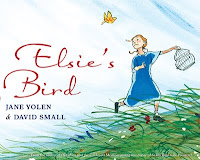


I've wondered about this new book by Francesca-glad to hear it is worth it.